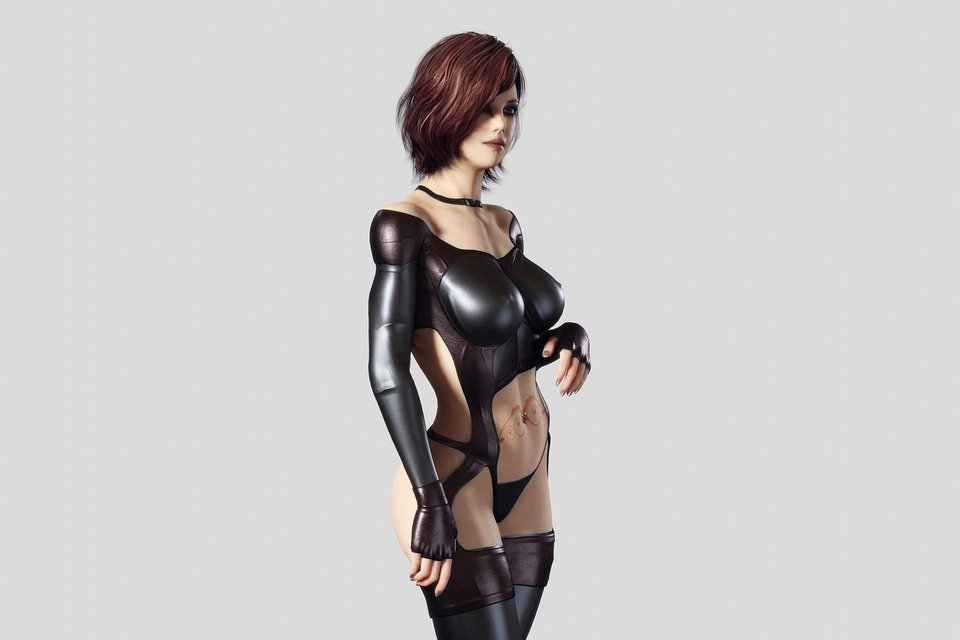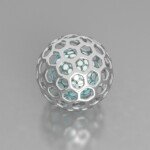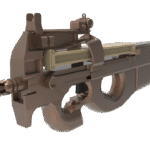Making Sounds: A Deep Dive into 3D Printed Guitar Picks and How to Make Your Own
For musicians, the humble guitar pick is a deeply personal tool. Its shape, thickness, flexibility and materials profoundly affect tone, feel and playing style. While mass-produced plastic picks dominate the market, additive manufacturing is starting a revolution. 3D printing, especially Metal 3D printingunlocking unprecedented possibilities for customization, durability and sonic exploration. This guide takes a deep dive into the world of 3D printed guitar picks, highlighting the intricate craftsmanship and unique advantages of metal.
Why 3D print guitar picks?
The beauty of a 3D printed pickaxe is absolute control:
- Super customized: Design a pick that perfectly fits the contours of your grip, with ergonomic textures or thumb grooves. Shape every curve and bevel to affect attack and release.
- Unparalleled material selection: Move from standard plastics to durable exotic metals or optimized engineered polymers for unique sonic characteristics and tactile feedback.
- Durability redefined: Metal picks, in particular, have excellent wear resistance and are likely to last longer than plastic picks, resisting string wear and tear.
- Unique aesthetics: Embed logos, intricate patterns or textured finishes not possible with traditional machining. Create a truly iconic piece.
- Performance optimization: Minimal experimentation with thickness, tip geometry, flex, and weight distribution to fine-tune your sound and playability.
How To: Create Your Own Metal 3D Printed Guitar Pick
Create the perfect shade with these steps, focusing on the precise power of metal printing:
-
Master the design:
- software: Start with CAD software. Free options like Tinkercad or Fusion 360 (free for hobbyists/startups) are great for picking up geometry: simple 2D sketches with a slight thickness (0.7mm – 1.5mm common). For complex textures or 3D features (subtle grips, keyholes), FreeCAD or Blender offer more powerful capabilities.
- Key parameters: Key definitions:
- thickness: Determines flexibility and attack power. Thicker picks (1.0mm+) are stiffer and louder; thinner picks offer more flexibility. Metal allows for an ultra-thin but strong design.
- Shape and size: Standard teardrops, jazz, triangle music, or invent your own. Size affects control and attack areas.
- Bevel/Edge: A sharper edge produces a brighter tone and a snappier attack. Rounded edges smooth out the sound. The precision of metal printing allows for sharp or detailed rounded vertices.
- Grip/Texture: Integrate surface features (dimples, ridges, knurls or perforations) into the CAD model to prevent slippage. This is the advantage of 3D.
- Weight/mass distribution: Metal allows strategic material placement (e.g., thicker core, lighter edges) to subtly affect balance and feel. Designed with weight in mind.
- Metal-specific considerations: Avoid being too thin and unsupported "islands" It may become deformed during printing. Skirts or minimal supports can be designed directly in the model if desired. File Export: Ensure clean, flawless STL or STEP files.
-
Choose the perfect metal:
- Beyond plastic: Although nylon, resin or TPU printing is novel, Metal unleashes the pinnacle of performance and durability. consider:
- Stainless steel (316L, 17-4 PH): Very popular choice. Offers excellent corrosion resistance, good stiffness, balanced tone (similar to thick plastic but brighter) and high durability. Ready to use.
- Titanium (Ti6Al4V): Lighter than steel, yet stronger and corrosion resistant. Offers a unique feel – very smooth slide, durable and known for its bright, clear attack and good sustain. Premium choice.
- Aluminum alloy (AlSi10Mg): Light weight, good stiffness and corrosion resistance. Produces a bright, clear tone and is generally considered slightly more aggressive than steel or titanium. Excellent value for money.
- Exotic options: Cobalt Chromium Alloy (CoCr): Extremely hard and wear-resistant; uniquely smooth, glassy feel and bright hue. Nickel Alloys: Often used in combination to achieve specific properties, such as increased strength or a unique sound texture.
- Sonic shock: A metal pickaxe usually produces Sound is brighter, louder and clearer Features enhanced sustain and reduced pick noise compared to plastic. Titanium provides clarity and smoothness, steel provides punch and weight, and aluminum provides sharp attack. The precision and density of 3D printed metal ensures consistency.
- Beyond plastic: Although nylon, resin or TPU printing is novel, Metal unleashes the pinnacle of performance and durability. consider:
-
Precision production cooperation:
- technology: Metal picks require high-resolution additive manufacturing. Direct Metal Laser Sintering (DMLS) or Selective Laser Melting (SLM) The process is ideal. Powerful lasers meticulously blend fine metal powders layer by layer to achieve the intricate detail and smooth finish required to play the instrument comfortably.
- Why expertise is important: Perfecting a functional metal pick is no easy task. The factors are as follows:
- direction: How the pick is positioned in the printer can affect the support structure, surface finish of critical gaming surfaces, and potential warpage.
- Support structure: Engineered to hold thin sections or overhangs during printing that need to be carefully removed without damaging delicate pick contours or edges.
- Laser parameters: Precise power and scanning strategies ensure complete melting, density, and prevention of defects such as voids that could compromise strength or feel.
This is where a professional partner like GreatLight becomes invaluable. As a professional metal 3D printing manufacturer, we bring:
- Advanced DMLS/SLM equipment: Capable of handling the fine details (<50 microns) necessary to pick up edges and textures.
- Materials Science Expertise: Gain insights into how different metals behave during printing and finishing to achieve optimal pick-up performance.
- End-to-end post-processing: A true one-stop solution:
- Support removal: Meticulous technology ensures the pick’s playing surface remains flawless.
- Stress Relief/Heat Treatment: Crucial for optimizing material properties such as strength and ductility.
- Surface treatment: Choose the feel: smooth polished edges for glide, sandblasted edges for grip, vibration tumbled for a satin finish, or even custom electropolished/anodized (for titanium/aluminum).
- Fast customization and precision: Need a one-off prototype or thousands of unique options? Our process can quickly process complex geometries without the need for expensive tooling. When precision is critical to feel and sound, our focus on precision sets us apart.
- Test, tweak and improve:
- Test your prototype! How does it feel? How does it feel to hold? Listen carefully to the tone of the strings and techniques (strumming, picking).
- Tweak your CAD model: adjust bevel edge angles, refine grip texture density, change thickness distribution or try different materials.
- Iterate quickly: send your refined designs back to production. This is where the flexibility of 3D printing shines.
Conclusion: The perfect choice – engineered, not just molded
3D printed guitar picks, especially those made from high-quality metal via DMLS/SLM, represent a fascinating fusion of music and cutting-edge manufacturing. They go beyond simple options to become custom performance tools designed to a player’s exact specifications. The ability to carefully control shape, texture, mass and, most importantly, the material itself, opens up sonic realms inaccessible to off-the-shelf options. The unparalleled durability of materials like titanium or cobalt chrome means your perfect pickaxe design will be a long-lasting companion.
For musicians seeking ultimate expression and luthiers exploring sonic innovation, metal 3D printing offers a solution. While easy-to-use hobby printers can handle plastics, achieving the fineness, durability, and resonant potential of metal picks requires industrial-grade equipment and deep expertise in design optimization, materials science, and precision machining.
This is the core advantage of GreatLight. Our professional metal 3D printing services offer advanced technology, material versatility (from stainless steel and aluminum to titanium and more), and meticulous post-processing that are critical to delivering metal guitar picks that are functional, playable, and sound great. We solve the complex manufacturing challenges involved, allowing creators to focus on design and sound. Whether it’s a single unique artist selection or a signature line, we offer reliability, quality and customization at competitive prices. Customize your precise sound now – explore the endless possibilities with GreatLight.
Frequently Asked Questions About 3D Printed Guitar Picks
1. Are 3D printed guitar picks (especially metal picks) easy to use?
Absolutely! If designed and printed correctly, they can be outstanding. Metal picks offer unique benefits: exceptional durability, a bright and clear tone with enhanced sustain, a unique smooth string feel, and the ability to create unique designs that are highly ergonomic or aesthetically pleasing that would not otherwise be possible. Quality depends heavily on printing technology, materials expertise and finishing – professional metal printing (such as DMLS/SLM) is key to reliable performance.
2. What materials are best for 3D printing picks?
- Plastic (FDM/Resin): Nylon (tough, flexible), resin (hard, brittle, delicate), TPU (flexible). Good for experimenting with shapes/designs on the cheap, but generally not as durable or as interesting-sounding as metal.
- Metal (DMLS/SLM): Stainless steel (Balanced, durable, versatile), titanium (Light, smooth, clear, high quality), aluminum (very light, bright/aggressive tone). cobalt chromium alloy (Extremely hard, smooth to the touch, shiny) is also possible. Metal is the first choice for professional performance and longevity.
3. How do metal 3D printed picks sound compared to plastic picks?
Metal pickaxes produce noticeable Sound is brighter, louder and clearer. They produce less frictional noise ("Pick and scratch") and has a longer duration due to its density and stiffness. The exact tonal contour depends on the specific metal (Ti is cleaner/smoother, Al is brighter/edgier, Steel is punchier/balanced) and the thickness/shape of the pick.
4. How durable are metal 3D printed picks?
Extremely durable. Materials such as stainless steel, titanium and cobalt-chromium alloys are highly wear-resistant. They can last years, even decades, of regular playing, far longer than plastic picks that wear out or break. Their strength also means they won’t inadvertently bend or deform while playing.
5. Can I design and 3D print a custom guitar pick at home?
for plastic Choice: Yes, it’s easily possible with an affordable FDM (filament) or resin printer. Design software is accessible. Quality and feel may vary.
for Metal Choose from: Simple design, powerful printing capabilities, high quality Metal Due to the expense and complexity of metal 3D printers (DMLS/SLM), at-home selection is currently impractical and costly. Working with a professional service provider like GreatLight is a realistic and high-quality approach to metals.
6. How thin can a metal 3D printing pick be made?
DMLS/SLM technology enables extremely thin yet strong sections – in certain orientations and materials such as titanium, thicknesses can be reduced to approximately 0.4 mm or less with proper design and support. This allows for a surprisingly flexible metal pick if desired, providing tonal characteristics not possible with thicker traditional metal picks. GreatLight’s precise capabilities are ideal for reliably pushing past these limitations.
7. How long does it take and cost to make a custom metal pick?
Faster production time compared to traditional metal fabrication (no tools/molds). Order fulfillment typically requires days to weeksdepending on design complexity, batch size and selected post-processing (e.g. polishing adds time). The cost per pick is higher than mass-produced plastic, but competitive with custom metal objects. This greatly depends on the material, pick size, complexity, level of finishing and quantity. GreatLight specializes in providing these custom engineered grade parts at the best value.
8. Do the picks need lubrication like traditional metal picks?
Generally speaking, less than many cast or stamped metal picks. The inherent smoothness of 3D printed metal surfaces, especially after polishing or tumbling, significantly reduces friction. Some players may prefer a slightly "lick" Or use a proprietary pick lubricant to absolutely reduce friction, but is usually not necessary for a properly done printing pick.
Ready to design your signature sound? Use GreatLight’s professional metal 3D printing technology to create guitar picks that redefine playability and performance.










































